The chest and back routine is one of the best muscle training combinations. This may be the most convenient system to achieve the greatest muscle pump in the torso. We would like you to try our training with carefully selected chest and back exercises so that you can explain your feelings to us.
This routine is ideal within a three-day-per-week gym workout. We recommend training on Monday (biceps and shoulders), Wednesday (legs and triceps), and Friday (chest and back). We allow a recovery day between each workout, as well as the weekend. In our training, we will combine chest and back exercises in the gym so that one muscle group rests while we work the other (for example, we will do a chest exercise and then another back movement).
The gym chest and back routine with 11 exercises
Do the exercises in the order in which they appear. Any beginner, intermediate, or advanced person can do this chest and back routine . Also, this is a chest and back routine for women and men alike.
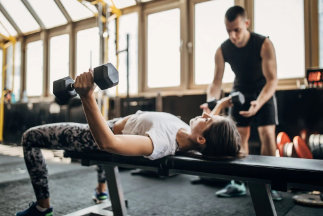
The training will work as follows. All exercises will have at least 2 working sets. In the first sets of each exercise, we will use a medium or light load that allows us to do between 50 and 20 repetitions. We will do the repetitions in the fastest and most explosive way possible (without losing the correct technique). In the second sets, we will use a heavier load that allows us to perform between 15 and 5 repetitions.
How to progress? The best thing is that we write down all the weights and repetitions that we are doing in each exercise. We will try to gain 2.5kg on barbell exercises and 2kg on dumbbell exercises in each workout. Give yourself some room for improvement! Don't start the routine always reaching muscular failure; stay 2-3 reps away from muscular failure.
- For the light sets, start, for example, with a weight that allows you to reach 40 repetitions easily. Add 2.5 kg (or 2 kg) in each workout until one day you reach a load that allows you to do only 15 repetitions.
- For the heavy sets, start with a load with which you can do about 15 repetitions. Add 2.5 kg (or 2 kg) in each workout until one day you reach a weight that allows you to do only about 5 repetitions.
What will you do when you get to 15 reps for your first set or 5 reps for your second set? Then, at your next workout, you'll go back to your starting weights and try to beat your rep records from there!
Let's look at an example for the dumbbell bench press exercise. Let's say you started with 8kg dumbbells for 40 reps on your light set, and 12kg for 16 reps on your heavy set.
| light load | repetitions | Heavy load | repetitions | |
| training 1 | 8 kg | 40 | 12 kg | 16 |
| training 2 | 10 kg | 24 | 14 kg | 10 |
| training 3 | 12 kg | 16 | 16 kg | 6 |
| training 4 | 14 kg | 10 | 18 kg | 3 |
We finished the first set of workouts with 14kg x 10 reps for the light set and 18kg x 3 reps for the heavy set. Now, we will return to the weights of "Workout 1" to try to beat our personal bests. An example would be the following:
| light load | repetitions | Heavy load | repetitions | |
| training 1 | 8 kg | 46 | 12 kg | 19 |
| training 2 | 10 kg | 29 | 14 kg | 15 |
| training 3 | 12 kg | 21 | 16 kg | 12 |
| training 4 | 14 kg | 17 | 18 kg | 8 |
| training 5 | 16 kg | 14 | 20 kg | 6 |
| training 6 | 18 kg | 10 | 22 kg | 4 |
As you can see, the approach is to go further and further with the weights and reach new repetition records. We'll apply a similar progression to all chest and back exercises in the gym. Remember: there are two sets; the first is light and the second is heavy. Now, let's see how the training is.
Chest and back routine for hypertrophy PDF
- Duration: you will need 1 hour and 45 minutes or 2 hours to complete this routine.
• Flat bench press :
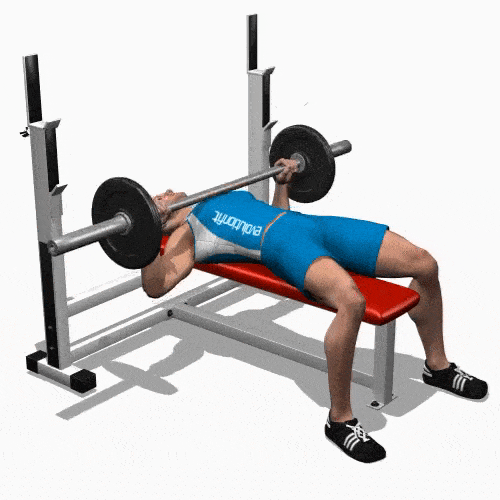
We do a few warm-up and approach sets before starting on the working weight.
1 light set
2 heavy sets
• Neutral grip pull-ups :
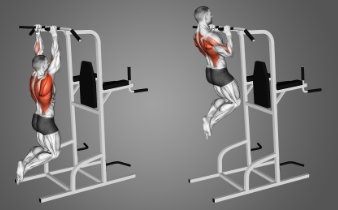
We'll be doing neutral pull-ups for a reason: conventional pull-ups can cause sore forearms if you've done the bench press before.
For this exercise, we will take a different approach when it comes to loads. In the first set, we'll start with our own body weight. In the following training sessions, we will add 1.25 kg more of ballast each day.
1 set of weighted pull-ups
2 sets with our body weight
• Bench flyes with a slight inclination :
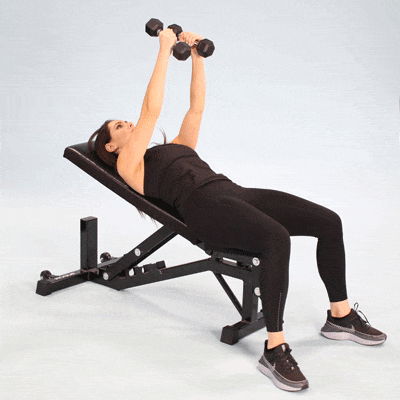
We will incline the weight bench only about 15º (normally, a single link of the adjustable bench).
1 light set
1 heavy set
• Pendlay Barbell Row
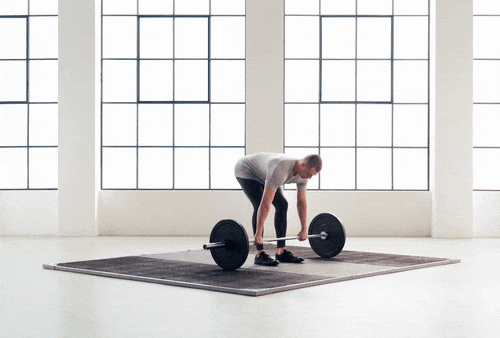
1 light set
1 heavy set
• Dips in parallel bars for pectoral
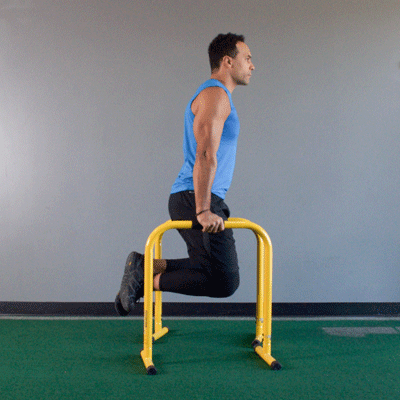
As you can see, this is a complete calisthenics chest and back workout (includes bodyweight exercises). To do the dips, we'll follow the same approach as in the pull-ups. There will be a first weighted set (to which we will add 1.25 kg more in each workout) and another set with body weight.
1 set of weighted dips
1 sets with our body weight
• Wide, Neutral Grip Back Pulldown
If you don't have the long neutral grip, you can use the normal wide handle.
1 light set
1 heavy set
• Flat dumbbell bench press
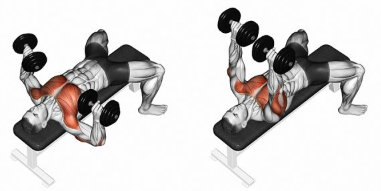
1 light set
1 heavy set
• One arm bench dumbbell row
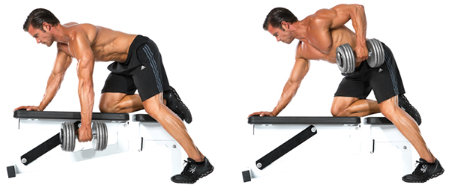
1 heavy set
1 light set
• Decline Barbell Bench Press
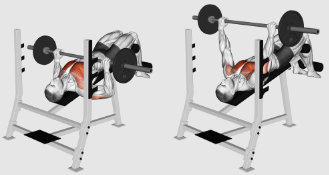
If you can't do this exercise with a barbell, you can decline a bench and use the dumbbells.
1 heavy set
1 light set
• Pull-over with dumbbell
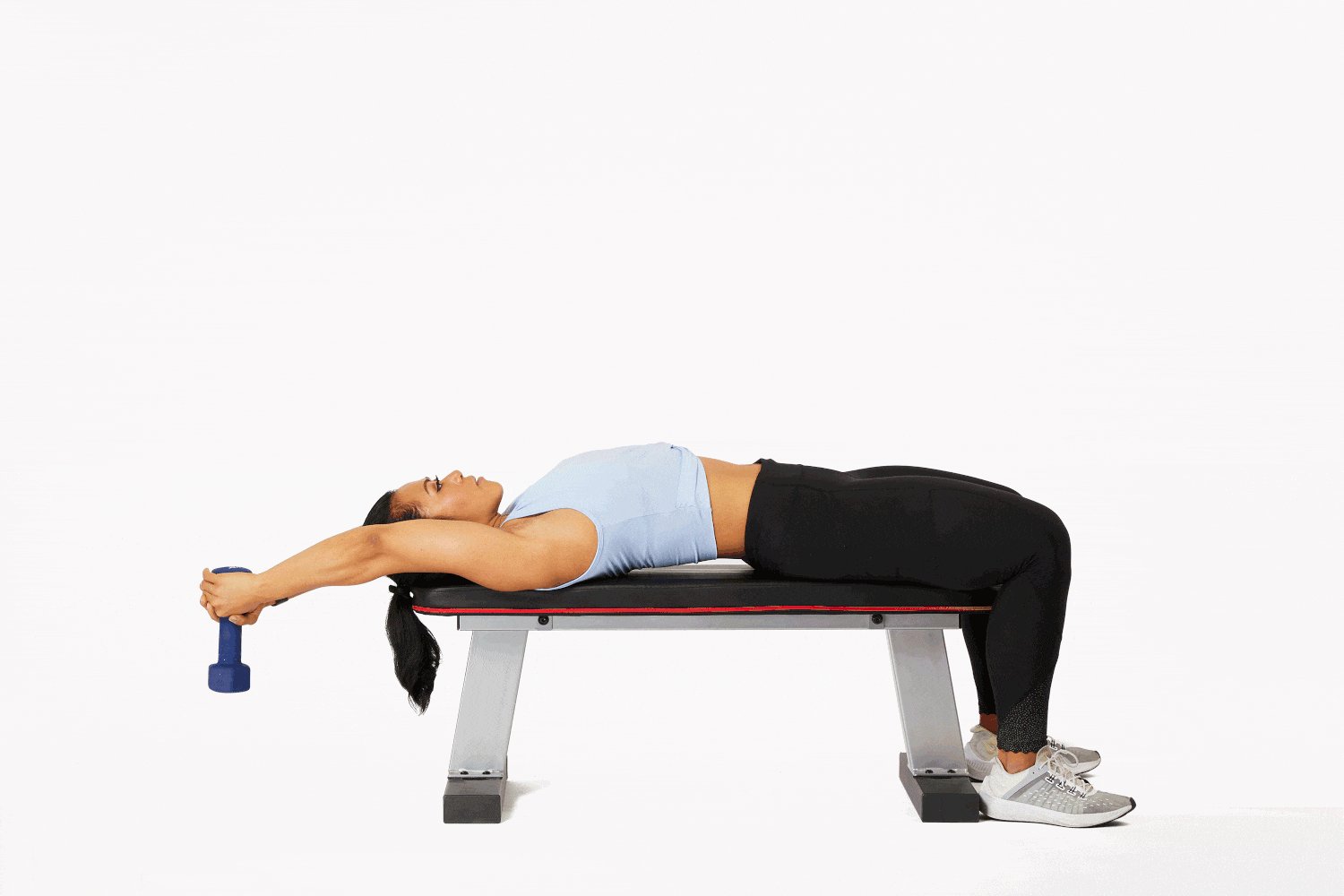
This is an exercise for the chest and back at the same time. That is why it is placed at the end of the routine, when both muscle groups are exhausted.
1 heavy set
1 light set
• Machine chest flyes
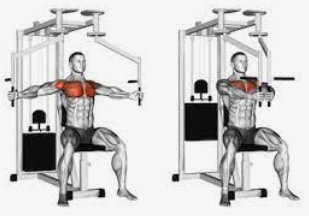
1 heavy set
1 light set
There are a total of 11 back and chest exercises and 24 training sets (not counting any warm-up sets you do). This is a chest and back workout with a barbell, dumbbells, and machines. It has varied exercises that guarantee total work on the dorsal and pectoral muscles. Do this back and chest routine in the gym one day a week following the training scheme that we have proposed. We recommend training chest and back together on Friday. You will rest during the weekend.
Over time, you can vary your workout and do the heavy set first and the light set later. This can help you get out of a deadlock. Let yourself be guided by your feelings.
Benefits of the chest and back routine to increase muscle mass
If you're tired of feeling like your upper body workout lacks balance or isn't producing the results you want, feel free to try the same day chest and back routine . One way to ensure a strong and balanced upper body is to incorporate chest and back exercises into your training program. These muscle groups not only complement each other, but also help improve posture and reduce the risk of injury. Let's see the importance of exercises for the chest and back. We will delve into the anatomy of these muscles. Achieve a strong and balanced upper body with an ideal combination of chest and back exercises!
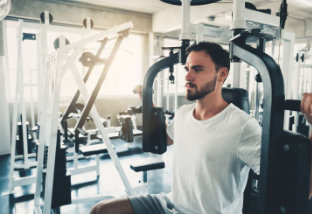
The chest and back routine is an essential part of any complete workout. Both muscle groups are essential for maintaining good posture, improving athletic performance, and promoting overall health and fitness. Why is it important to strengthen the chest and back with exercises?
Position
Strong chest and back muscles help keep your shoulders back and spine in the correct position, which can improve posture and reduce the risk of back pain.
Sport activities
The chest and back muscles are heavily involved in many upper body movements, such as pushing, pulling, and throwing. Strengthening these muscles can improve performance in sports such as basketball, soccer, and swimming.
Muscle balance
Many people tend to focus more on their chest muscles than their back muscles, which can cause muscle imbalances and increase the risk of injury. Incorporating chest and back exercises into your training routine can help balance your muscles and prevent injury.
Overall strength
Strong chest and back muscles are essential for everyday activities like lifting heavy objects, carrying groceries, and even getting up from a sitting position.
Aesthetic appeal
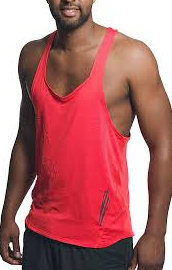
With a good chest and back workout , you can get these muscles well defined to improve your overall physique and boost your self-confidence.
A beginner's chest and back routine should include push-ups or dips, bench presses, pull-ups, rowing exercises, and cable pulldowns. It is important to include a variety of exercises that target all areas of the chest and back muscles, and gradually increase the intensity and difficulty of the exercises over time.
Why do an exercise routine for chest and back together
Training the chest and back together is a common practice in many strength training and bodybuilding programs for a number of reasons.
• Time Efficient : When you train your chest and back together, you work more muscle groups in one session. This saves you time in the gym.
• Balanced Development : The chest and back are opposite muscle groups, which means they work against each other. Strengthening both muscle groups can help prevent imbalances that can lead to poor posture, shoulder pain, and other problems.
• Increased Strength : The pectoralis and lats are large muscle groups, and working them together can increase overall strength and power. This can have a positive impact on other exercises and activities like push-ups, pull-ups, and sports that require upper-body strength.
• Improved Muscle Pump : This can help you with muscle growth and repair.
In general, training chest and back together can be an effective way to save time, improve overall upper body strength and balance, promote muscle growth and recovery.
Know the anatomy of the back muscles
The back is made up of the latissimus dorsi, rhomboids, trapezius, and teres major . Understanding the anatomy of the thoracic and spinal muscles is important for a strong and balanced upper body thanks to the chest and back workout at the gym. The back muscles can be divided into three main groups: latissimus dorsi, rhomboids, and trapezius.
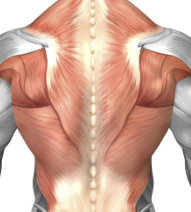
- The latissimus dorsi is the largest muscle of the back; it runs from the lower spine to the upper arm and is therefore essential for many pulling movements.
- The rhomboids are located in the middle of the back and bring the shoulder blades together, which helps improve posture.
- The trapezius is a large rhomboid muscle that covers much of the upper back and neck area and plays an important role in shoulder movement and stability.
- Another muscle that is often overlooked, but still essential for a strong back, is the teres major muscle . This works in conjunction with the latissimus dorsi muscle to pull the arm down and back, making it a key component of many rowing exercises.
Understanding how these muscles work can help you tailor your back and chest workout routine in the gym to effectively target each muscle group.
Know the anatomy of the pectoral
The chest is made up of the pectoralis major and the pectoralis minor .
To create a complete chest and back routine in the gym , it's important to understand the anatomy of the pectoral muscles. The pectoral muscles are made up of two main muscle groups: the large pectoralis and the small pectoralis.
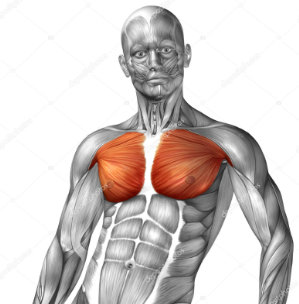
- The pectoralis major is the largest muscle in the chest and is responsible for movements such as pushing, pulling and lifting.
- The pectoralis minor muscle is smaller, located below the sternum and helps stabilize the scapula.
Exercises like push-ups, barbell bench presses, and dumbbells are great for working the pectoralis major muscle. Those who want to work both the pectoralis major and the pectoralis minor can do exercises like the cable fly and the incline fly, which can be very effective. By incorporating a variety of exercises that target these two muscle groups, you can achieve a strong and balanced upper body with an effective chest workout routine.
How to organize your chest and back training?
The way you combine chest and back exercises in the gym during a training session depends a lot on what you want to achieve. Arnold Schwarzenegger liked to do chest and back exercises with little to no rest in his bodybuilding workouts. For example, you can do a set of incline presses followed by seated cable pulldowns. Rest for a minute or two and repeat. This is a great plan to speed up your training and burn more fat, but it sets a pace that may be too intense for many people.
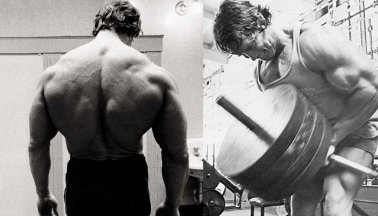
Studies show that longer rest periods help you train with heavier weights, which stimulates more muscle growth. So you can alternate chest and back movements with plenty of rest time in between (for example, 90 seconds to two minutes of time between pushes and rows). Muscle growth is your main goal.
There is also no rule that says you have to alternate between chest and back exercises in the routine. You can do all the chest movements first and then switch to the back movements, or vice versa. This may be better for less experienced athletes. It's also a good option if you want to focus on one area at a time and give full attention to each part in turn, but without splitting muscle groups into two different workouts.
It may be wise to complete one part of the body before the other if that part is your weak point. Most people have underdeveloped backs, so doing all of your back exercises while fresh will allow you to work your lats with maximum efficiency and concentration. If you have shoulder problems, you may want to do the back first because the exercises warm up the shoulders and make the pressure more even when you get to the chest. Yes, doing chest second can mean sacrificing chest exercises due to fatigue. If you have tight shoulders or other related injuries, your sports doctor can teach you how to stimulate your muscles with less weight.
The correct way to work with a chest and back routine on the same day
The chest and back workout at the gym is important for strengthening the upper body and improving posture. Here are some tips on how to do the exercises correctly:
Heating
It is important to warm up before beginning an exercise to avoid injury. You can do light cardio such as skipping, jogging without moving, or use a foam roller to loosen up your muscles.
Correct way of movement
The correct form of movement is crucial to maximize the benefits of each exercise and reduce the risk of injury. Make sure your back is straight, use your core, and keep movements slow and controlled.
Chest exercises
Begin pushups from a plank position with your arms shoulder-width apart and your elbows close to your body. Lower your torso until your chest almost touches the ground; then push up. To do the dumbbell chest press, lie on a bench or on the floor with a dumbbell in each hand. Lower the weights until your elbows reach a 90-degree angle; then push up. For flyes , lie on a bench or on the floor with a weight in each hand. Stretch your arms out to the sides, then bring them together at chest height.
Back exercises
Popular back exercises include pull-ups, rows, and the lat pulldown. To do the pull-up , grasp the bar with your palms facing out, pull up until your chin is above the bar, then lower back down. For rows , stand with your knees slightly bent and your back straight; then pull the weight up to your chest keeping your elbows close to your body. To do a cable pulldown , sit on the cable machine grasping the bar with a wide grip. Pull the handle toward your chest, then slowly raise your arms up.
Stretching
Take some time to stretch your muscles after your back and chest workout . Stretching can help prevent pain and improve flexibility.
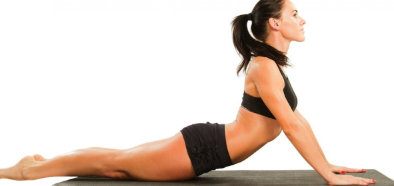
Remember to listen to your body and start with lighter weights or make changes if necessary. It is also important to ensure adequate nutrition and rest to support the exercise routine.
IFBB pro bodybuilder Johnny Catanzano says that the chest and back go well together because they are opposites. This means that while one works, the other rests. To speed up your training, you can alternate sets for each muscle group with little to no time intervals, since fatigue doesn't transfer much from one muscle group to the other. This is a great way to speed up your workout if you're looking to lose fat or can't be in the gym for long.
Imagine that you are exercising only your chest or only your back. You choose an exercise, do a set, rest, do another set, rest, and so on until you complete the sets. Then, you move on to another exercise. There's nothing wrong with this approach, but if you rest for at least two minutes between sets (as recent studies show if you want to maximize muscle mass gains), your training time can easily be extended to an hour or more. And you will only have trained one muscle area!
On the other hand, if you alternate chest and back muscle groups, you can work both muscle groups much faster . The chest recovers when you train the back and vice versa, so you can use shorter rest periods between sets and complete the exercise in less than an hour without speeding up the recovery of any muscle group.
Let's look at an interesting study from the Journal of Strength and Conditioning Research. Subjects performed three sets of traditional rows followed by three sets of bench press. In the second session, they did the same routine again, but alternating exercises for the back and chest. The researchers found that when the lifters alternated between the two exercises in the second session, they didn't have to reduce the weight they used as much from one set to the next. Participants were able to lift more total weight than when they only did sets followed by a single exercise. This probably occurred because each muscle rested more before having to work again.
Alternating back and chest exercises in the routine is also great if your goal is to lose fat. Johnny Catanzano explains that more calories are burned by training two large muscle groups together . Your heart rate will increase more than if you train one area of the body at a time, and even more so if you decide to do super sets. Do one set for the chest and then one set for the back without rest to maximize fat burning.
In addition, the combination of chest and back exercises in a single workout ensures that the work done in each zone is balanced. Many people (mostly men) train their chest diligently and then consider back training on top of it and only do a few sets of pulleys or rows. However, if you plan to train both areas in the same session, you can easily keep track of the sets you do for one area and coordinate them with the other.
If you're interested in developing your strength, the chest and back workout will help you understand the relationship between a big back and a good bench press. A stronger back allows you to push yourself harder in all exercises. The lats help stabilize your body when the bar is on your chest when bench pressing, for example. For this reason, many weightlifters perform chin-ups or rows between bench sets.
Make your back and chest gym routines
Incorporating chest and back exercises into your workout is key to developing a strong and balanced upper body. These muscle groups work together to support your posture, protect your spine, and improve your overall athleticism. Understanding the anatomy of these muscles and doing properly designed exercises can help you achieve optimal results without injury. Our gym chest and back routine has the best exercises. Use it along with tips on how to perform the moves correctly. Are you ready to start!





![LAS MEJORES MÁQUINAS DE MUSCULACIÓN PARA PRINCIPIANTES [GUÍA 2025]](/modules//smartblog/images/no-home-small.jpg)
![HOW TO BUILD A HOME GYM ON A BUDGET [2024 GUIDE]](/modules//smartblog/images/296-home-small.jpg)


